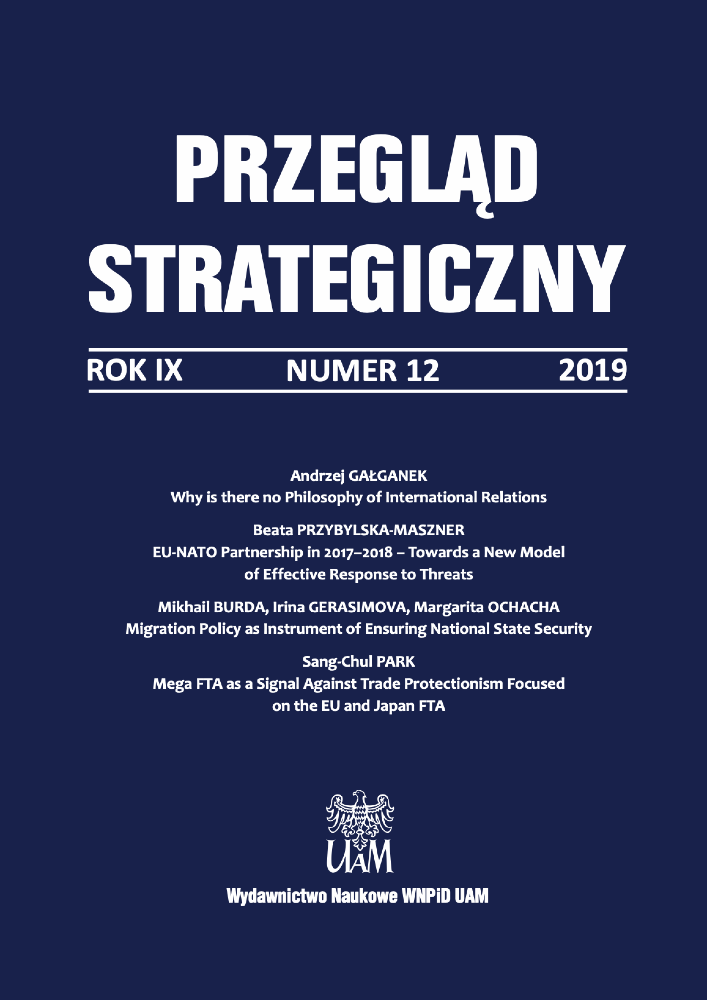Abstract
Today, China is the leading economic power, its gross domestic product (GDP) increased from 1979 to 2018 in 50 times, to $13,2 trillion. This is 10 times the GDP of Russia and almost 30 times the GDP of Poland. China’s nominal GDP is the second in the world after the United States. The authors not only reveal the factors of the Chinese phenomenon, but also attempt to analyze the main components of China’s success in economic development. The purpose of this study is a comprehensive analysis of key features of China’s economic development strategy. Тhe authors examine the key features of China’s economic development strategy, the priority directions of its modernization: public administration reforms, state regulation of the economy, analyze the features of attracting national and foreign investments for a breakthrough in socio-economic development. Тhe authors used the analytical, comparative, institutional and sociological methods.
References
Agriculture alue added (% of GDP) (2016), http://data.worldbank.org/indicator/NV.AGR.TOTL.ZS?locations=CN (18.06.2018).
Alekseev M. (2012), Comparative analysis of the development of Russia, the USA, Europe and China, “EKO” – Novosibirsk, № 6.
Babaeva Z. Sh. (2015), China’s economic development: benchmarks and ways to achieve, “Economy and Entrepreneurship”, № 3 (56–2), part 2.
Babaeva Z. Sh. (2015), Innovations: the driving force of economic growth in China, “Economy and Entrepreneurship”, № 3 (56–2), part 2.
Berger J. M. (2014), The New Stage of China’s Economic Development (Towards the Results of the 3rd Plenum of the CPC Central Committee of the 18th Convocation), “Problems Dal. East.”, No. 2.
Berger Y. M. (2009), China’s Economic Strategy, Forum, Moscow.
Chen Jiagui (2009), China’s economy. Analysis of the state and development prospects, Per. with whale, Science, Moscow.
Chen Qiang (2012), The state in the innovation economy of China, Delta, Bryansk.
China Economic Outlook (2018), https://www.focus-economics.com/countries/china (25.06.2018).
China Statistical Year Book (2011), China Statistical Press, Beijing.
China’s GDP grew by 15 times in 30 years (2017), http://russian.people.com.cn/31518/6555668.html (19.03.2018).
Chinese Automobile Miracle (2007), http://expert.ru/magazine_auto/2007/07/kitayskoe_avtomobilnoe_chudo/ (15.03.2018).
Gao Ying (2008), Features of the formation of high-tech industries in China, Author’s abstract. diss....cand. econ. sciences.
Granet M. (2008), Chinese civilization, Algorithm, Moscow.
Grinin L. E. (2014), The Chinese model and the prospects for the leadership of China in the world, at: Where the age of globalization is heading, Volgograd.
In China, the session of the main advisory body was completed (2018), https://ria.ru/world/20180315/1516398351.html (15.03.2018).
Ivanov S. A. (2014), Special economic zones in China: lessons for Far Eastern policy, “Russia and the APR”, No. 4.
Juan Ya. (2012), Capitalism in Chinese. State and business: Trans. from English, 2nd ed., Alpina Publisher: Moscow School of Management, Moscow.
Karelina E. A. (2015), Economy of China in the system of modern world economic relations in the light of the prospects for the development of Chinese-Russian economic relations, “Economy and Entrepreneurship”, No. 3 (56–2), part 2.
Karelina E. A. (2015), Features of the socio-economic development of the PRC in the twentieth century, “Bulletin of the Institute of Economics RAS”, № 2.
Kondratiev V. (2013), Developed in China, “Direct investments.”, № 1/2.
Lee Sin (2013), The triangle “China – Russia – USA” in modern conditions, “Russia and modern world”, No. 4.
Moiseev V. V. (2017), Why Russia can not yet become a prosperous country, Moscow–Berlin.
Mozias P. M. (2015), Economic growth in China in 2014 and forecast for 2015, “Problems Dal. East.”, No. 1.
Nasibov I. A. O. (2012), Scientific and technical potential of China: results and development prospects, “World Economy and International Relations”, No. 10.
Portyakov V. Ya. (2014), On the issue of the complex power of China: approaches to the assessment, structure, dynamics, prospects, “China in world and regional politics: Past and Present”, Issue 19.
Regzenova D. B.-O. (2010), The basic principles and essence of the reforms of Deng Xiaoping, https://cyberleninka.ru/article/v/osnovnye-printsipy-i-suschnost-reform-den-syaopina/ (15.06.2018).
Sazonov S. L. (2005), The role of transport in the development of China, “Asia and Africa today”, No. 1.
Smertin Yu. G. (2005), China and Africa: mutual interest, “Historical, philosophical, political and legal sciences, cultural studies and art criticism. Questions of theory and practice”, No. 5-2 (55).
Smirnov D. (2004), Deng Xiaoping and the modernization of China, “Problems of the Far East”, No. 5.
Summit SCO in Qingdao (2018), http://russian.people.com.cn/n3/2018/0615/c31521-9471752.html (17.06.2018).
The population of China (2018), http://countrymeters.info/en/China (27.06.2018).
World Development Indicators: Gross Domestic Product (2017), http://gtmarket.ru/ratings/rating-countries-gdp/rating-countries-gdp-info (29.06.2018).
XVIII Congress of the CPC on the tasks of building a moderately prosperous society (2012), http://mir-politika.ru/3319-xviii-sezd-p-o-zadachah-postroeniya-srednezazhitochnogo-obschest-va.html (30.06.2018).
Zeng Chao (2015), The use of public-private partnership in construction in the People’s Republic of China, “Zhurn. legal and economic research”, No. 1.

